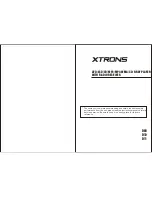
5 – C-Channel Installation
Do not perform roof work when strong winds, rain, thunderstorms or lightning are active or
expected.
In the interest of safety and an efficient installation process, assemble all necessary tools and
components for roof C-channel and collector installation. See Appendix - Tool and Supply Checklist.
TIP: C-channel twirl-nuts (for securing collectors to C-channel) are equipped with springs that hold
them in place. Push twirl-nuts through C-channel and turn 90° clockwise to secure them. Position
them at approximate collector mounting points, at center and at ends, before hoisting C-channel to
roof; fewer pieces to carry – fewer pieces to drop!
After roof-penetration has been made and approximate location of solar collectors has been
determined:
1. Determine location and spacing of roof rafters (Fig. 5.1.1). This may be easy from inside attic, but
rafter positions need to be transferred to exterior roof. This may be done in a number of ways and
will depend on access:
• Measure from side edge of roof or carefully remove
soffits to determine spacing.
• Temporary metal clips, strips or pipe may be fixed to
the rafters inside the attic and a metal
detector (eg., Zircon MT6, Bosch D-Tect 100) used to
determine rafter location from outside.
• Using roof-penetration as landmark, distance to
rafters may be measured inside attic and
measurements transferred to exterior.
• A nail may be used, pushed through from inside, to
m a r k l o c a t i o n o f r a f t e r . A n y r o o f -
penetrations must be appropriately sealed.
Rafters are often not exactly parallel and spacing at eaves may not be equivalent to spacing where C-channel is
to be installed.
EnerWorks is not responsible for any damage to structural member due to inadequate anchoring and sealing
of C-channel and of solar collectors. Assure to meet any applicable code
5.1 Locating Rafters and Positioning C-Channel
Fig. 5.1.1 – Roof rafter spacing.
Solar Collector
Installation Manual
11
Module 4
Summary of Contents for EWRA1
Page 37: ......














































